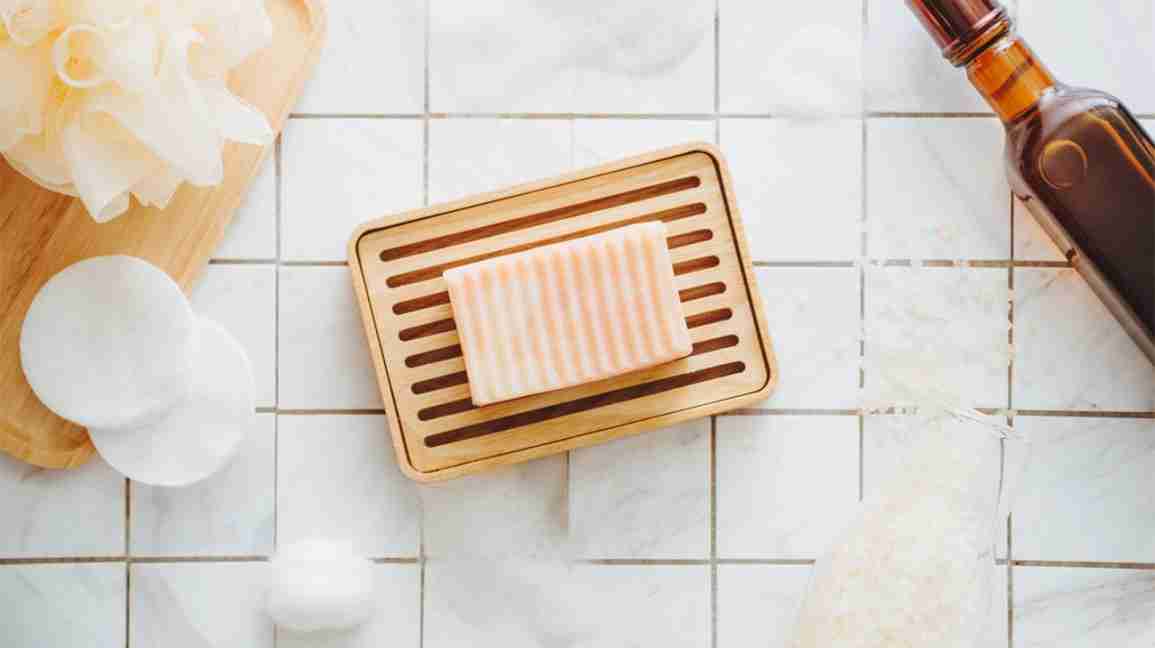When you use skin cleansers, especially bar soaps, chances are you may see sodium cocoate on the ingredients list.
Sodium cocoate is an additive derived from coconut oil. It helps clean the skin naturally, making it a popular ingredient in cosmetics, soap, and other beauty products.
Keep reading to find out more about how sodium cocoate can keep skin clean and whether it’s right for your skin type.
Sodium cocoate is a surfactant, or cleanser, that specifically acts as an emulsifier. An emulsifier helps to create a stable balance between oils that cleanse and water that rinses off the day’s dirt, oil, and makeup.
Some people prefer products with sodium cocoate because it’s a natural alternative to synthetic chemicals like sodium lauryl sulfate that are usually used in soap-making.
If you want to start buying more natural products, soaps that contain sodium cocoate can be a good start.
Noncomedogenic products are ones that won’t clog your pores. If you’re prone to acne, using noncomedogenic products can help keep your skin clear.
The jury’s out on whether sodium products that contain cocoate are comedogenic. While it’s true that coconut oil in its natural form may clog pores, sodium cocoate isn’t the same chemical compound as coconut oil.
Think about it this way: When you bake a cake, you probably add oil to the mixture. But you also add other ingredients, like flour, water, butter, eggs, and more. At the end, you have a new product: a delicious, decidedly non-greasy cake.
All this to say, products that contain sodium cocoate aren’t likely to clog your pores. However, some people who are especially prone to acne may find sodium cocoate-containing cleansers do clog their pores.
Sodium cocoate is a common ingredient in many soaps designed to fight acne. Cosmetics manufacturers may add ingredients like salicylic acid to help clear the skin.
However, it’s possible that products containing sodium cocoate can lead to breakouts for a number of reasons.
If the products irritate your skin, this can lead to inflammation which may cause breakouts. This isn’t likely, but it’s possible if you have really sensitive skin.
You should also carefully read the ingredients in your soap. Soap manufacturers commonly add other oil-based compounds, such as:
These ingredients could be causing your breakouts, too.
Cosmetics manufacturers derive sodium cocoate from coconut oil.
To make it, they take the fatty acids naturally present in the oil and combine them with sodium hydroxide, which is a combination of lye and caustic soda. This chemical process makes sodium cocoate.
Alternatives to sodium cocoate in soap-making include compounds that are:
- petroleum-based
- oil-based
- synthetic
The Food and Drug Administration (FDA) has approved sodium cocoate for use in cosmetic products. They classify it under their “Generally Recognized as Safe (GAS)” category.
This means the FDA doesn’t have any evidence to indicate that sodium cocoate is unsafe for use and that most experts consider the additive to be safe for use.
You can have an allergy to sodium cocoate. The additive may irritate your skin, causing:
- swelling
- redness
- itching
- excessive dryness
If you stop using the cleanser, you’ll likely avoid any further side effects.
If you’ve had an allergic reaction to sodium cocoate-containing products in the past, read labels carefully before purchasing soaps. You’ll want to avoid these products in the future.
As a general rule, you should also avoid getting sodium cocoate-containing products in your eyes, as they can cause serious irritation. If you do get the soap in your eyes, flush your eyes gently with water.
Any other negative side effects?
Some people report that products containing sodium cocoate are drying to the skin. This is much like any cleanser that may remove too much oil.
However, some manufacturers may incorporate other skin-softening ingredients like glycerin into their soap production.
To avoid drying your skin, it’s important that you incorporate cleansers the right way into your skin care routine. Here are some tips to consider:
- Don’t use overly hot water to cleanse your skin.
- Avoid over-scrubbing your skin.
- Don’t feel like your skin has to feel squeaky clean before you finish cleansing.
- Pat your face dry gently with a soft washcloth.
- Apply a moisturizer after cleansing to help restore your skin’s moisture barrier.
These tips may fight dryness associated with sodium cocoate-containing products.
You’re most likely to find sodium cocoate in bar soaps. This is because sodium cocoate is largely a cleanser. Other products that contain sodium cocoate include:
Some manufacturers may use alternate names for sodium cocoate when listing their products. These include:
- coconut oil
- fatty acids
- coco and sodium salts
Sodium cocoate is a popular, natural cosmetic ingredient that may help to cleanse the skin. This additive is derived from coconut oil.
As with many skin care ingredients, it’s possible that sodium cocoate could irritate your skin. However, the FDA recognizes the product as safe.
Using proper skin cleansing techniques may help you avoid skin dryness associated with products that contain sodium cocoate.

